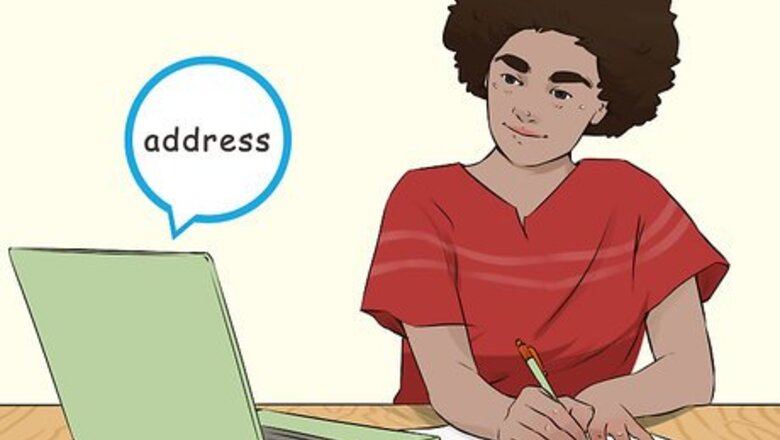
views
Addressing the Letter
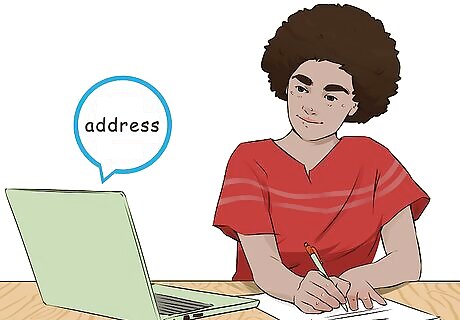
Find the mayor's address. Look it up in your local phone book, or go to your city's website. You might also research if there's a specific committee that deals with your concern. Think about writing a separate letter to that council as well.

Gather your writing materials. You'll need clean stationery and writing implements or a computer and printer. If using a computer, open a text-editing program.
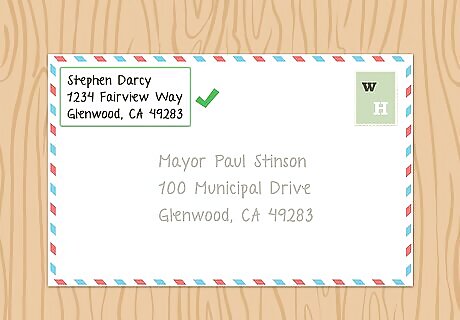
Fill out the envelope. Include your return address. Write this in the top left corner of the envelope: Your name Your street address Your city and zip code
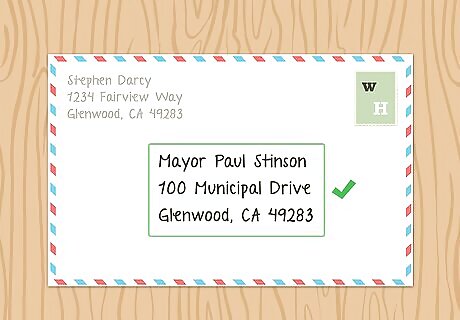
Include the mailing address of the mayor. Write this in the center of the envelope: Mayor J. Doe City of (your city) Street address City and zip code.
Writing the Letter
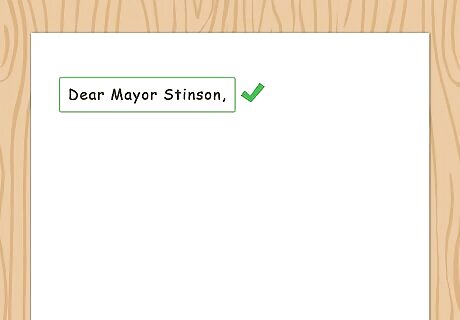
Include a salutation or greeting. Start by addressing the person you're writing to. In this case, you might write, Dear Mayor Doe, This is the standard greeting for a mayor. For the rest of the letter, you'll want to keep a conversational and respectful tone. Don't worry about being too formal.

Introduce yourself in the first paragraph. Spend three to five sentences telling them who you are in relation to the issue you'll be bringing up.For example: As a citizen/employee/member... of (city/company/organization...) Keep the intro brief. Don't provide irrelevant details about yourself. Instead, connect yourself to your concern.

Describe the issue of your concern. You'll need to give specific details. Don't be afraid to use bullet points to provide facts. For example: It has come to my attention that... Only address one issue in your letter. If you have multiple concerns to bring up, write a separate letter for each issue.
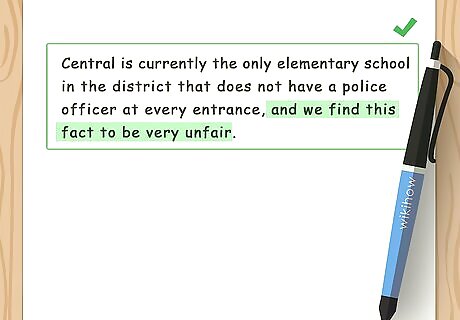
Tell them how you feel about the situation. Again, keep this brief, but be sure to connect yourself to the issue. For example: I am appalled by the decision to...

Offer suggestions and solutions. Avoid simply complaining about a problem. Show the mayor that you've done your research. You could give examples of similar situations in other cities and effective solutions.

Ask your mayor for help. Be honest with the mayor and don't feel as though you have to flatter them. Instead, be upfront about the changes you'd like to see. For example: As the Mayor of our great city, I ask that you consider other solutions. Make sure your letter is under a page, by this point. You'll want to keep it brief to ensure that it's completely read. Ideally, your letter should be between 3 and 5 paragraphs long.

Thank them. Be sure to thank the mayor in advance for addressing the concern. Since your letter should be brief, offer to provide more information if needed. For example: Thank you for attention to this important issue.

Sign the letter. Keep the closing address respectful and be sure to sign your name. Include your mailing address directly underneath your name so that the mayor is sure you live within their jurisdiction. For example: "Sincerely, (your name)"
Finalizing the Letter
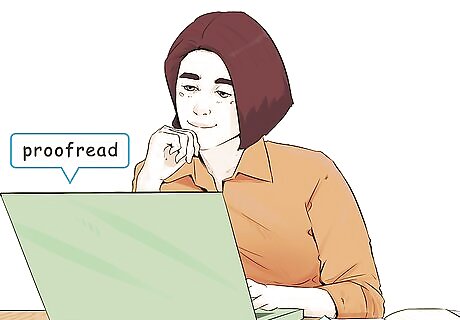
Proofread your letter. Look for simple spelling mistakes and grammatical errors. It can help to have someone else proofread the letter too.

Make any proofreading corrections. Fix any mistakes from proofreading and then proofread again. You may catch something else as you read it another time.
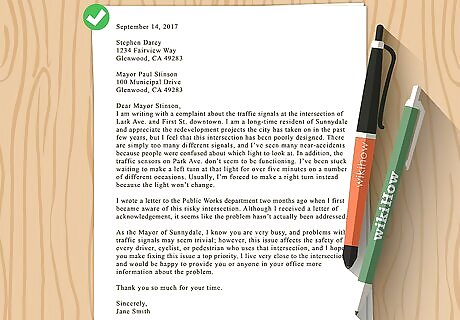
Print your letter. To make your letter look as professional as possible, only use black ink and print in a legible font and size, such as Times New Roman 12 point.
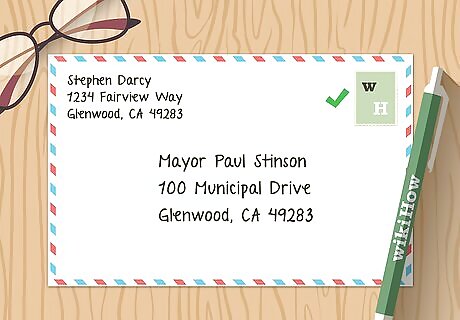
Get or buy a stamp. Stick the stamp on the top right corner of the envelope. Be sure to use enough postage, or your letter will be returned to you.
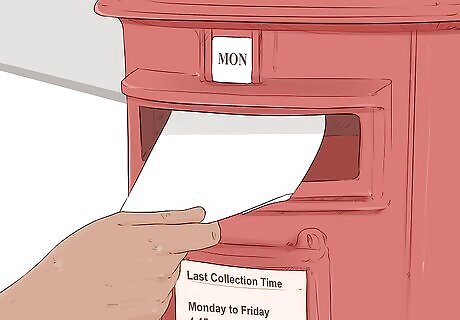
Mail your letter. After mailing your letter, you should receive some response from the mayor or their office. If you don't hear anything back after a few weeks of mailing the letter, call the office to make sure it was received.



















Comments
0 comment